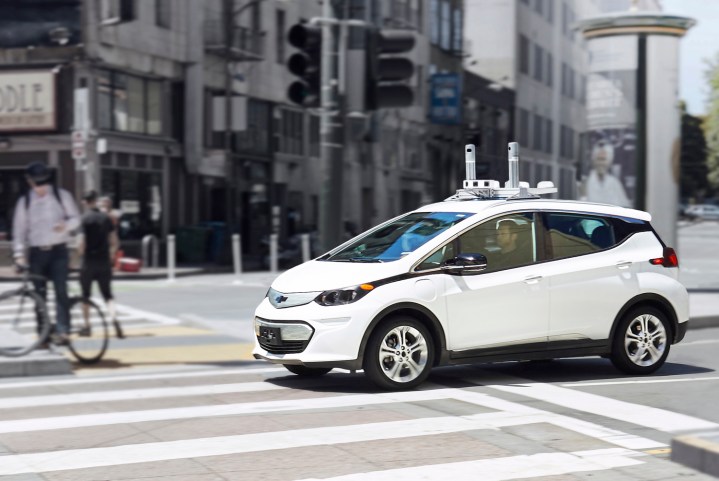
The company said that by 2019 it can have in place a driverless ride-hailing service in multiple cities, a proclamation that will have the likes of Uber, Lyft, and just about every cab driver working today, sitting up and taking notice.
The service would use fully autonomous electric cars — like the self-driving Chevy Bolt it’s developing — and could, with widespread rider adoption and falling electric-vehicle costs, charge as little as $1 a mile by 2025, about a third of what existing ride-hailing services charge.
GM’s service could launch in any major city across the country depending on demand, though of course local regulators would have the final say.
The automaker said that its most recent projections suggest its robot taxi service would have the potential to make more profit than its current vehicle sales business. Signaling what could develop into a major change to its business model, GM president Dan Ammann told investors this week that whereas now the company receives an average of $30,000 over the lifetime of a new vehicle that it sells, that figure could balloon to several hundred thousands of dollars for a self-driving car deployed as part of a revenue-generating ride-hailing service.
GM hit the gas with its autonomous car plans in 2016 with the creation of its Autonomous Vehicle Development Team, following up soon after with the acquisition of startup Cruise Automation for around $1 billion.
Interestingly, at the start of 2016, GM invested $500 million in ride-hailing service Lyft, which is also developing robot taxis. Ammann declined to mention if Lyft would be involved in its own ride-hailing venture using driverless cars. Apparently keen to keep its options open, Lyft also partnered with Ford recently, with the same vision of developing autonomous cars for a driverless taxi service.
The GM president certainly sounded bullish about his plans for a ride-hailing service using robot taxis, saying, “If we continue on our current rate of change we will be ready to deploy this technology, in large scale, in the most complex environments, in 2019.”
With Uber and Waymo, among others, also moving toward launching full-fledged autonomous taxi services, the race is on to be the first to make it happen and make it work. GM has for the first time spelled out its ambitions regarding its own effort and we can’t wait to see how it turns out.
Editors' Recommendations
- GM to recall 6 million vehicles in U.S. over Takata airbag issue
- Setback for GM’s autonomous car unit as it delays launch of robo-taxi service


